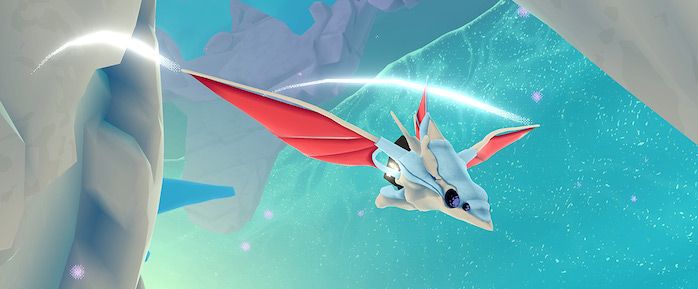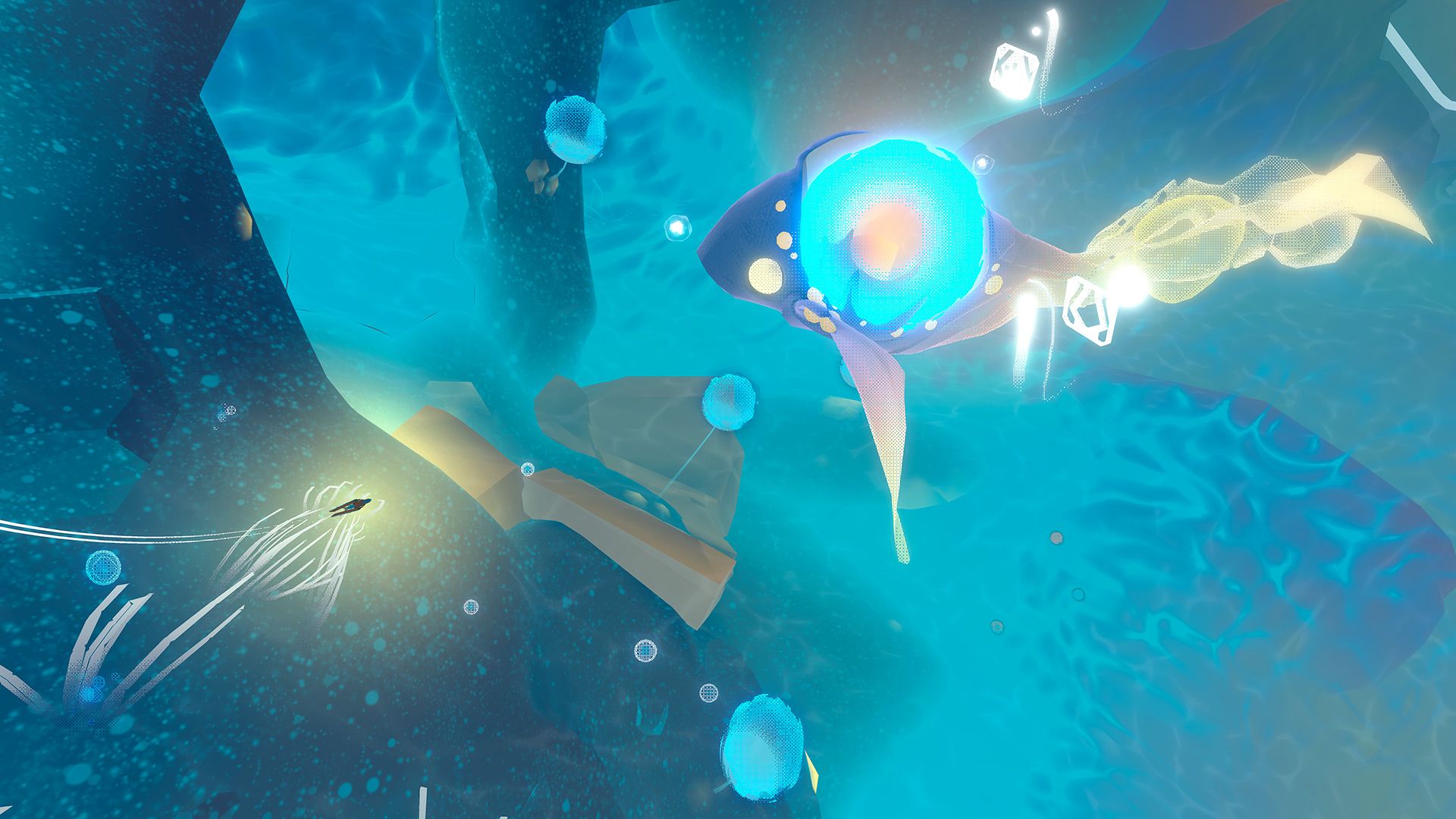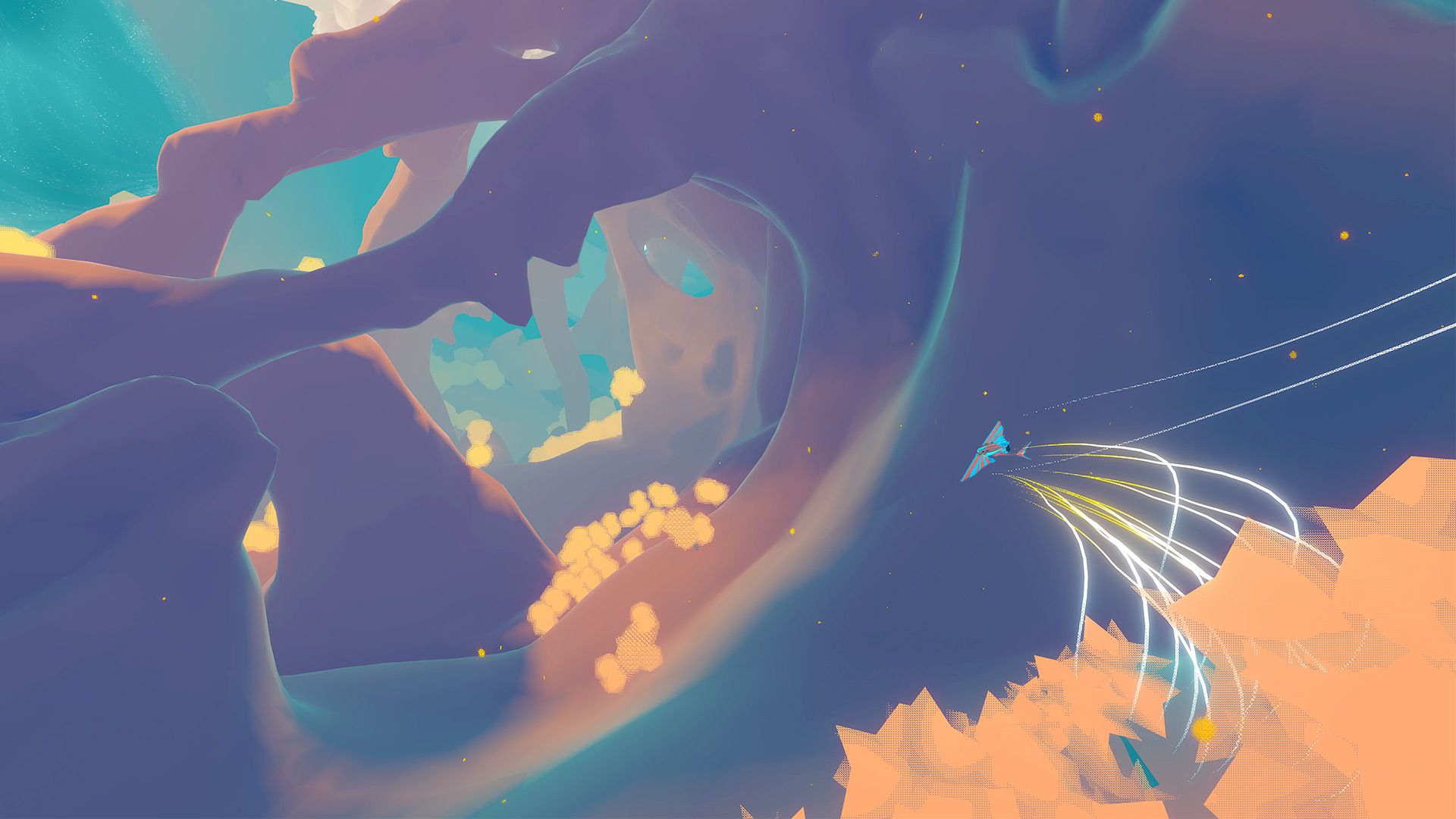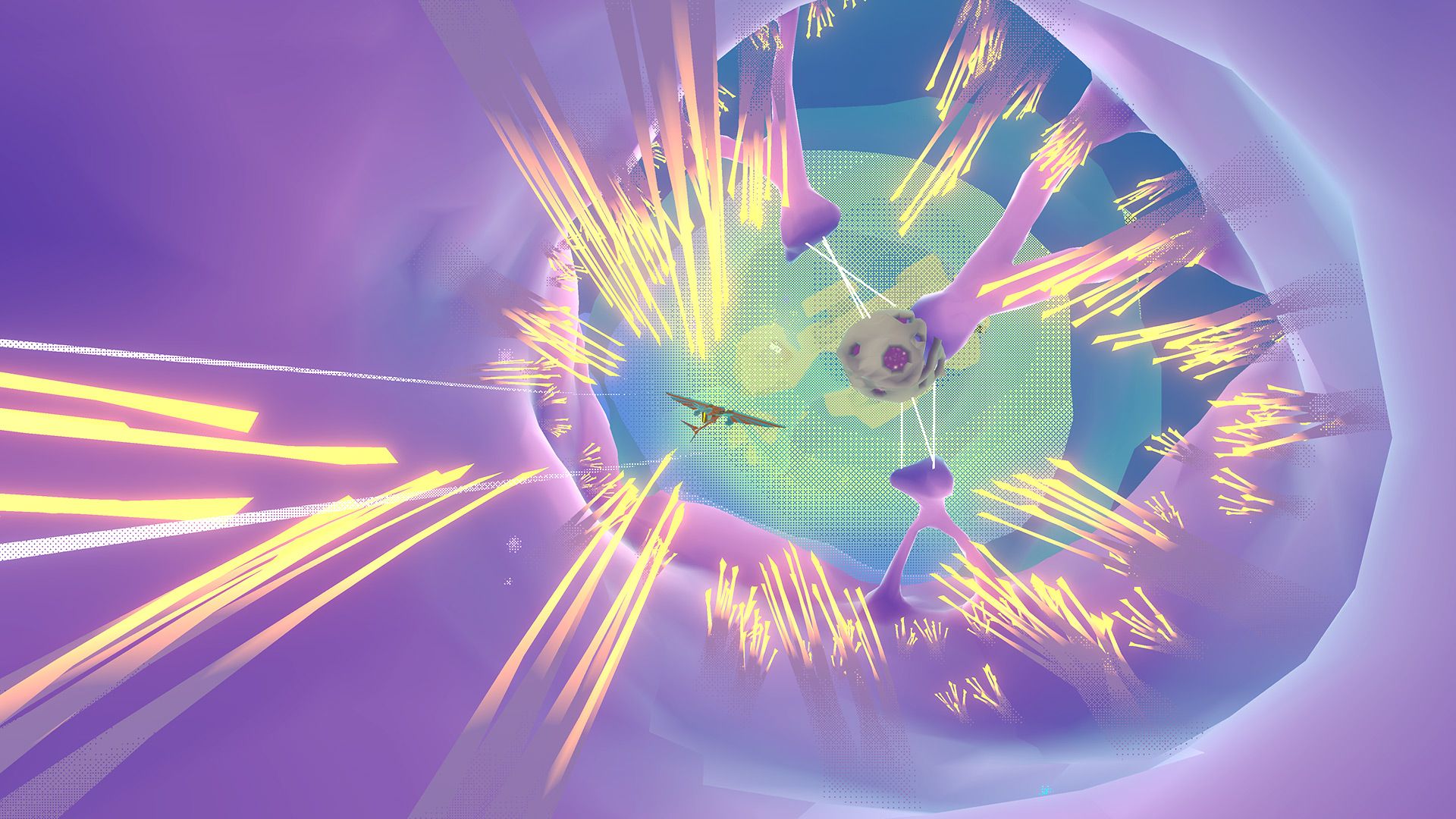PolyKnight Games is an upstart studio, but one with great ambition. Their first project is InnerSpace (which we've recently reviewed) and the second you fire it up, the feeling of thatgamecompany's best work comes to mind -- but with some twists. There is a relaxing open-world aspect to the game, but it requires more dexterity of the player thanks to its control of a flying creature. A game like Flower used minimal button commands and focused on motion control, while Journey was very simplistic. InnerSpace has an easy to learn control system that relies on twin stick controls for mid-air and underwater movement while button controls take care of secondary things like thrusting.
InnerSpace is an easy game to learn, a fun one to master and an incredible experience at all times. As a cartographer in a special suit helping out an archaeologist, your goal is to explore the world and uncover relics of the past. The world you're in is called the inverse and is seemingly doomed. Hopefully, by finding all of these parts of the past and learning about this strange area you can help save it. Each relic features messages that shed light on who was there before and it leads to the game rewarding you for exploration. Anything you absolutely have to find is something you'll be told about, but relic fragments are also thrown around the world and found after all the parts are collected.
Exploring takes some getting used to since as a player, you have to get out of the mindset of a completely serene experience akin to Abzul or Journey. There are guides goals to accomplish, but the real joy of InnerSpace is that you can do that at your own pace. This allows you to treat your personal journey as one either guided by the in-game mission of uncovering more information or by your own desire to explore the world itself more and envelop yourself in it deeper. There is no "perfect" run, but the structure of the game means that you can either take your time with it or opt for a speedrun if you so desire. There's a tremendous amount of player freedom offered up if you don't get tied down to the main objective.
There's nothing wrong with just doing that, but the adventure is far more satisfying when you take your time and explore. Finding parts of relics is exciting as a player, and the archaeologist's joy when that happens is infectous. You can choose to zip through stages by rocketing off of everything with a bumper button at full-throttle, or explore meticulously by holding back on the right stick. This winds up being your best bet to solve the puzzles too since it enables you to have the greatest level of control. Fine-tuning things like a flight into a series of strings to break them and then unravel a new part of the world ensures that precision is rewarded. Seeing the lines snap and then cause large rock formations to drop gives you a rush as well.
Similarly, darting around the environment has a particular thrill to it. Going from place to place at a rapid speed allows you to combine not only quickness, but also put a self-imposed challenge on yourself to still try and find things around the world. It's an incredible journey to undertake and one that finds a way to take the underwater exploration sub-genre of games and changes it up just enough to feel completely fresh. Having freedom within a somewhat confined space makes things fun too since you never have to worry about getting lost -- you can only do so many things within this space. Success alone is only a matter of time since you just have to find the right spot to move forward and you'll always have some idea of what to do.
This issue has plagued undersea games especially, with the Ecco the Dolphin series being the biggest offenders. While that franchise was often hurt by its bizarre storytelling, its biggest issues from a gameplay perspective came from never really being given an idea of what you should be doing. You could do many things even if they just involved going through an area, talking to other dolphins or leaping above the water, but a clear path from Point A to B was never set out and it led to the franchise stalling out with people just quitting before they could figure out its nuances. By making traversal through the world fairly frustration-free, this shouldn't be an issue for most players of InnerSpace.
InnerSpace's graphic design brings more feelings of the Pixeljunk series than anything thatgamecompany did -- even though there are definite touches of Journey with its HUD-less interface at times. The lack of any black outlines in the boldly-colored world makes everything seem either like a dream or a painting come to life. It's a stunning game to look at and features some of the most fluid animation on the market. Every part of the game is a treat for the senses too, with impressive music that is somber most of the time, but speeds up gradually during more intense scenes.
InnerSpace is going to put PolyKnight Games on the map and anyone who has enjoyed the works of either thatgamecompany or the folks from TGC that helped craft Abzu will love it. It's a serene experience as a whole, but brings intensity into the mix based on how it makes you feel. There's a greater sense of narrative structure with it and that should make it more accessible for those seeking a story to tie the game together. For a first-time developer using crowdfunding to craft their experience, InnerSpace is an impressive piece of work. It's also something that gives PS4 owners a chance to experience another thatgamecompany-like experience on a system rich with them while PC users get a rare glimpse into that kind of game with both this and Abzu.




